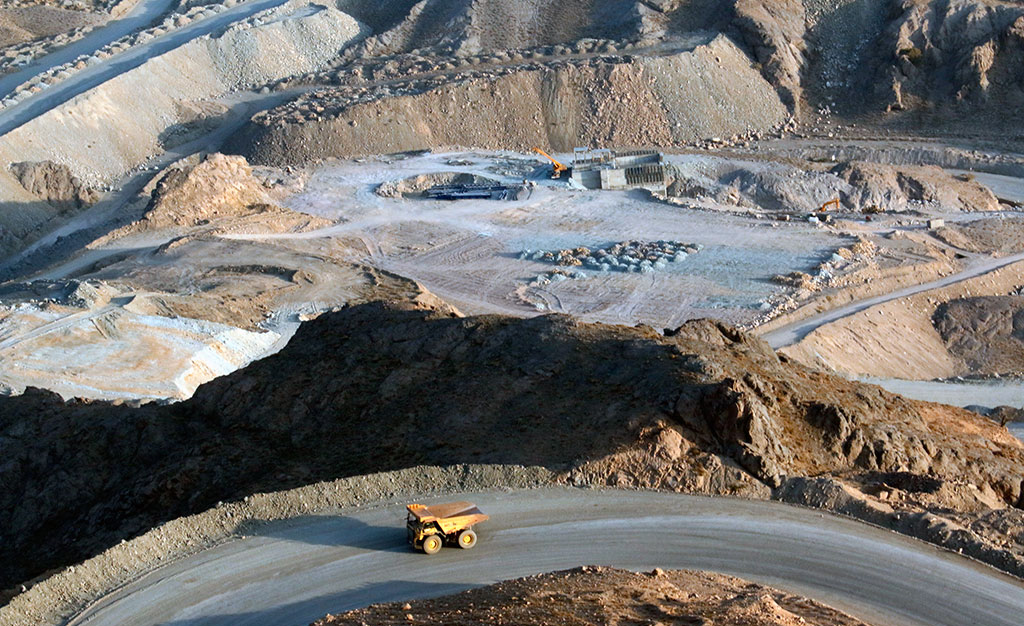The Iranian mining sector has a lot to boast about. With huge untapped reserves, cheap energy and skilled workforce, the industry seems set to be a major driver of the economy.
Yet, according to the latest data from Central Bank of Iran, the share of mining sector’s value added in GDP stood at only 4.5% during the fiscal 2015-16.
With such a meager share despite positive developments in recent years, can the sector be counted on as a reliable source of growth?
Economist Hamid Azarmand pointed to various factors hindering Iran’s economic growth and the mining sector during an interview with the Persian weekly Tejarat-e-Farda, excerpts of which follow:
Slowing Economy Seeks Strong Driver
Oil has been driving the Iranian economy ever since the country signed the nuclear deal with world powers in 2015 and successfully lifted the sanctions on crude exports in January 2016.
However, Azarmand believes that the drive is unlikely to sustain, due to basic limitations in production cap and technical hurdles.
“The [oil] industry will not do much for economic growth this year and in fact for the foreseeable future. Consequently, we expect to witness a significant drop in economic growth soon.”
Considering the poor share of productivity in Iran’s economic growth, capital formation is expected to be a major driver. However, this factor has witnessed a downtrend for the past seven years.
According to Azarmand, net capital accumulation dropped 3.8% during the fiscal 2009-10 to 2016-17, while it recorded a 7.2% increase in the 48 years before this period.
“Based on basic accounting principles, one cannot expect high economic growth for at least a few years with near-zero productivity and declining capital formation,” he said.
He noted that last year’s growth was “an exception”, brought about solely by raising oil growth and kickstarting dormant industrial capacities.
A best-case scenario for this year’s growth would be 3%, he added.
According to the Central Bank of Iran’s latest report, Iran’s economy grew 12.5% in March 2016-17 compared to the preceding year. GDP growth, without taking oil production into account, stood at 3.3%, the CBI said, noting that the oil sector registered a dramatic 61.6% growth last year.
The CBI report also indicates that the “industry sector” expanded 6.9% last year—a remarkable improvement compared to the 4.6% contraction registered a year before. Production in the agriculture sector expanded by 4.2%. Construction was the only sector that contracted last year and registered a -13.1% growth.
For bringing about economic growth without relying on oil, according to Azarmand, it is necessary to have a considerable rise in capital formation by attracting local and foreign investments, increasing transparency, facilitating business, reforming monetary policy and identifying potential sectors for driving economic growth. He believes that the latter factor is of prime importance.
Mining: Potential Vanguard for Economic Growth
Various sectors have acted as Iran’s economic drivers throughout history, the analysis of which can help draw up a pattern.
In the 60s, oil, public services and industry had the biggest shares respectively. The 70s witnessed the formation changing to industry, oil and public service. Then industry, services and transportation took the lead in the 90s. As Iran crossed into 2000, transportation, industry and construction came up.
In short, the last 50 years witnessed a shift from exploiting underground resources to industries and then toward services.
At first, this trend seems compatible with the global course of economic evolution. However, what caused Iran’s gradual movement away from exploiting natural resources to industries and services was not the latter’s development, but lack of investment and meaningful growth in the former.
The potent mining sector, for instance, has been starved of proper investments for the past decade, making it a weak actor in the economy.
“We have to realize that countries with high underground reserves such as Australia, Canada, Russia and the United States have always prioritized investments in the mining sector,” Azarmand said.
The main advantage of propping up the mining sector, other than the diversity it offers, is that investment in it is made in high volumes on a long-term basis and it is relatively safe from fluctuations compared to other sectors.
According to the economist, mining is usually the most attractive sector for attracting foreign investment. This is true for the sector even during periods of economic recession.
In fact, investing in mining indirectly leads to development of rail transportation, energy infrastructure and water and waste recycling. It also produces highly attractive commodities for exports and can procure special materials required for development of high-tech industries.
Impediments to Mining Growth
Small-scale mining and absence of big international players are the main factors impeding mining growth in Iran, Azarmand said.
“Over 70% of Iranian mines are operating with less than 10 miners. This prevents most of the country’s mines from acquiring modern production technology and competing in international arenas,” he said.
“These mines also suffer from severe transportation and energy infrastructure underdevelopment. And their small scale of operations and the subsequent lack of economy of scale, coupled with the overall lack of liquidity in the economy for project financing prevent them from taking the matter into their own hands.”
Other impeding factors, according to Azarmand, include government-enforced pricing of certain mineral commodities, use of outdated formulas for determining mining royalties and improper foreign exchange policy. He believes that the latter factor causes imported goods to end up cheaper than setting up plants and launching producing activities.


